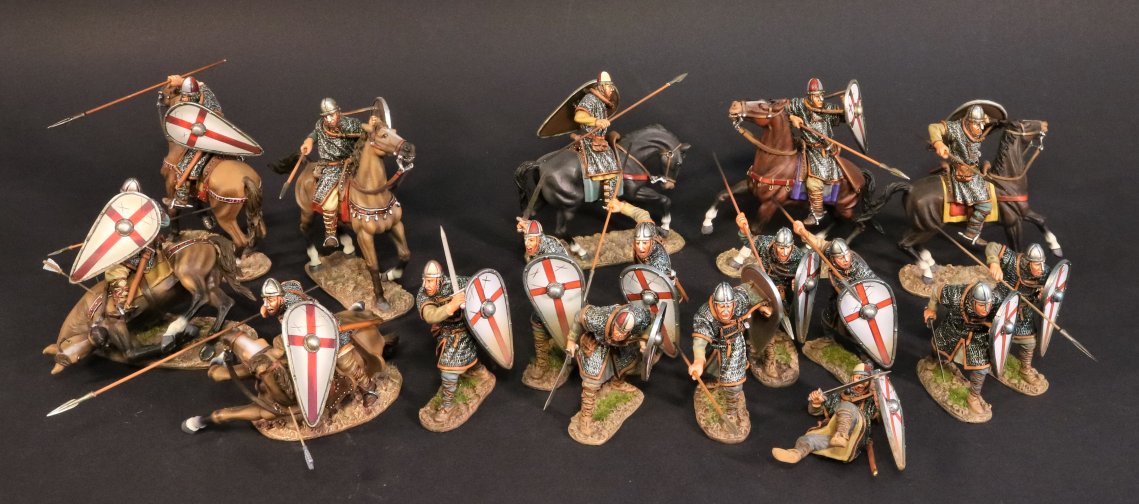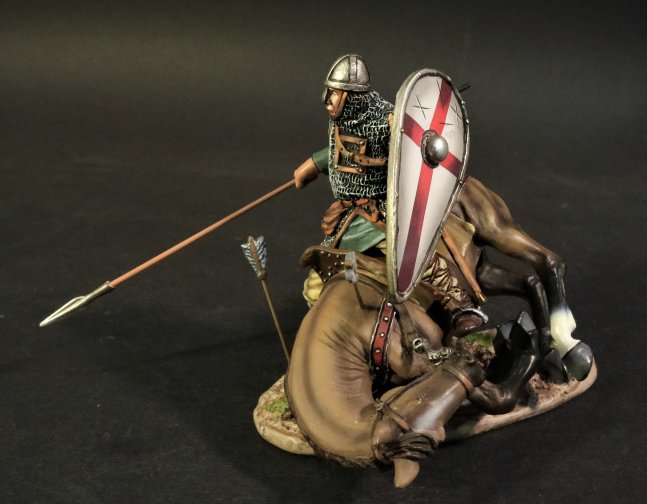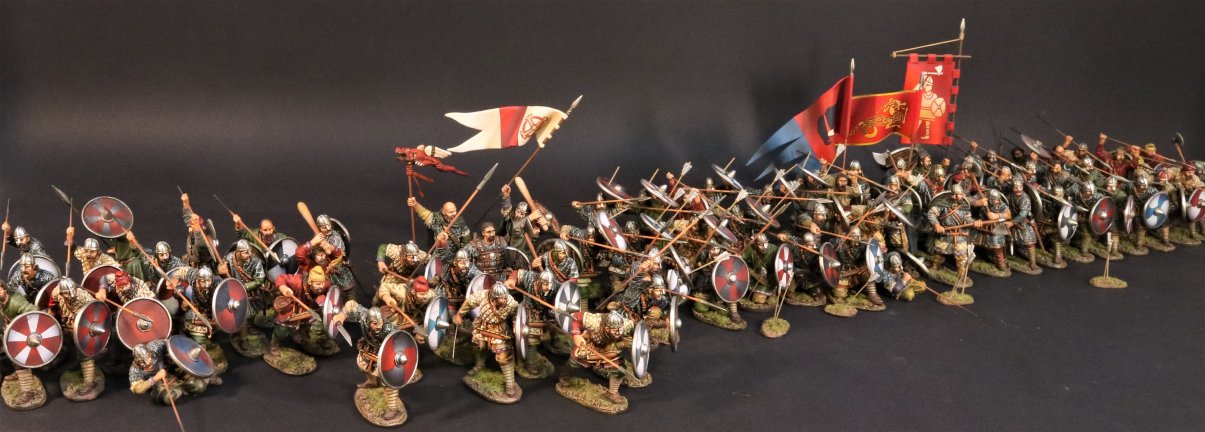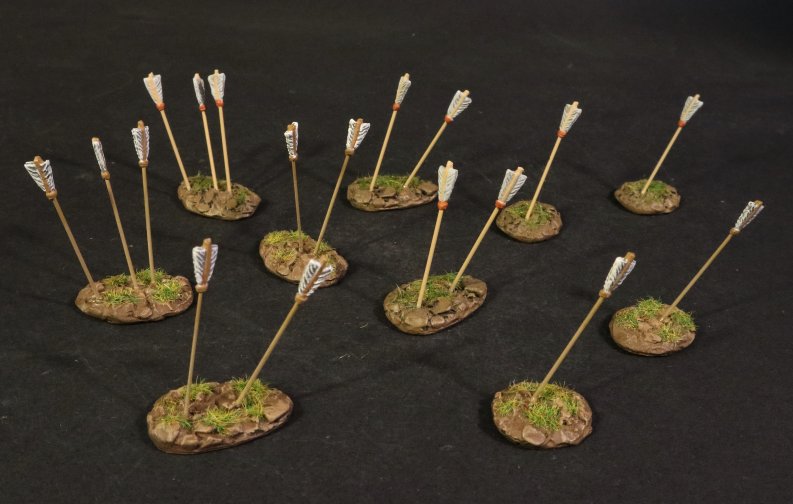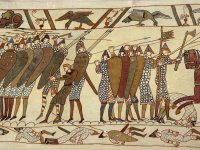- Joined
- Feb 2, 2011
- Messages
- 2,093
NEW RELEASES FOR NOVEMBER 2021
THE AGE OF ARTHUR
THE NORMAN ARMY
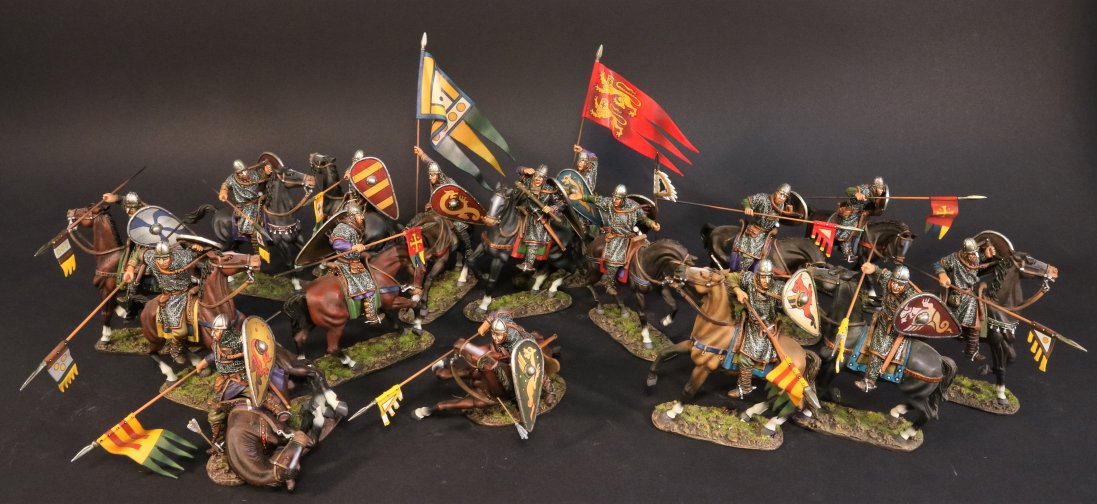
William Duke of Normandy (c. 1028-1087), usually known as William the Conqueror was the first Norman King of England, reigning from 1066 until his death in 1087.
In the 1050’s and early 1060’s, William became a contender for the throne of England held by the Childless Edward the Confessor, his first cousin removed.
There were other claimants. Including the powerful English earl Harold Godwinson, whom Edward had named as King on his deathbed, in January 1066.
William argued that Edward had previously promised the throne to him, and that Harold had sworn to support his claim.
Throughout the summer of 1066, William assembled an army and an invasion fleet in Normandy. This force included, in addition to troops from William’s own territories of Normandy and Maine, large numbers of mercenaries, allies and volunteers from Brittany, Northeast France and Flanders.
The Battle of Hastings took place on the 14[SUP]th[/SUP] October 1066. Although the numbers on each side were about equal, William had the advantage of having both cavalry, infantry and many archers.
Harold had only foot soldiers, and few archers. The English formed a shield wall along a ridge, and were initially so effective that the invading Norman army was repeatedly thrown back with heavy casualties.
Towards the end of the day some of William’s Breton troops panicked and fled, with some of the English troops pursuing the fleeing Bretons. These English troops who had broken ranks, were themselves attacked and destroyed by the Norman mounted knights.
Norman knights were armoured warriors that fought on horseback, with lance , sword and shield. These were the Norman “secret weapon” as nothing like them had been seen before in England. There were between 1,000-2,000 Norman knights in William’s army, and it was these troops which proved decisive to the invading army’s victory.
Two further Norman retreats were feigned, which once again drew the English into pursuit and expose them to repeated attacks by the Norman cavalry.
It appears that the decisive event was Harold’s death, of which there are differing versions which are told.
William of Jumieges claimed that Harold was killed by the Duke himself.
The Bayeux tapestry shows Harold’s death by an arrow to the eye.
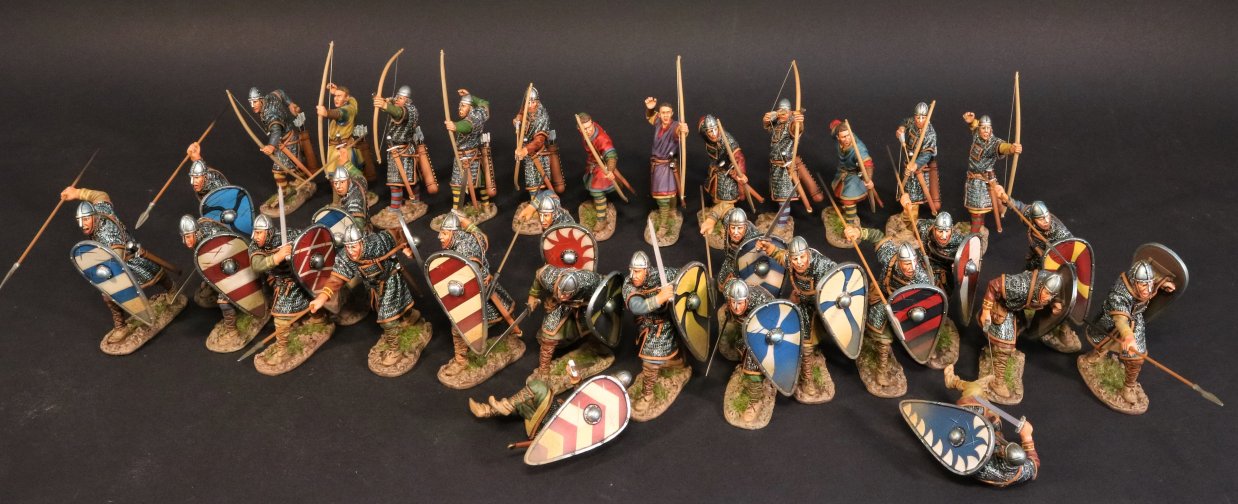
We know that the English forces were deployed in a dense shieldwall formation at the top of a slope, (which newer sources suggests was Caldbec Hill), with their flanks protected by woods, and with marshy ground in front of them.
What is known about the Norman deployment, is that Duke William appears to have arranged his forces in 3 groups or “battles”. The left “battle” consisted mainly of Bretons, and was led by Alan The Red.
The Centre was held by the Normans, under direct command of the Duke, and the right was commanded by William Fitzosbern and Eustace II of Boulogne, and consisted of Frenchmen. and mercenaries from Picardy, Boulogne and Flanders.
The front lines of the invading force were made up of archers, with a secondary line of foot soldiers armed with spears and swords. The cavalry was held in reserve.
The Norman disposition of forces implies that the plan was to open the battle with archers, weakening the enemy with arrows, followed by infantry who would engage the shieldwall in close combat. The infantry would create openings in the English lines that would then be exploited by cavalry charges.
It is believed that the early barrage of arrows, probably had very little effect on the English shieldwall, due to the higher position of the English on the ridge.
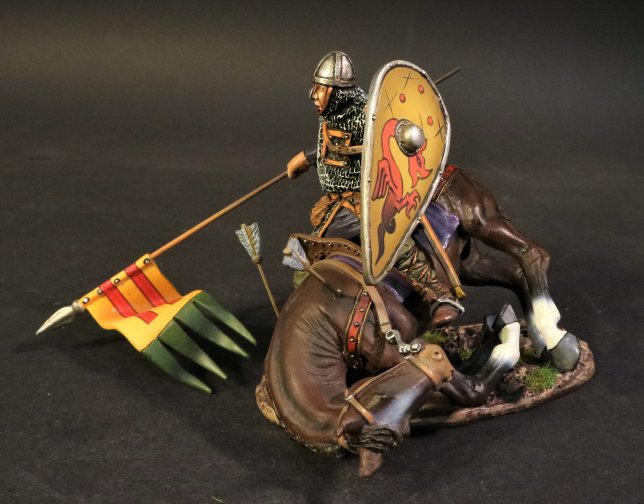
NM-15
THE AGE OF ARTHUR,
THE NORMAN ARMY,
NORMAN CASUALTY
EL CID AND THE RECONQUISTA
THE SPANISH
The age in which El Cid lived has since been termed the “Reconquista”, or Christian reconquest of Spain from the Moors, and was one of the most colourful periods in military history.
The armies are spectacular and varied, ranging from the noble Christian Knights to the Muslim Andalusians, through to the religious zeal of the African invaders, the Almoravids and Almohads.
Although the period is often portrayed as a simple war of religion, it was in fact a great deal more complex, with Muslim commonly fighting Muslim, and Christian fighting Christians, with both sides using allies and mercenaries whenever it suited them.
This period, during the lifetime of El Cid 1040-1100AD saw the rise of heavy cavalry charges and other northern European influences, especially in the kingdoms of Aragon and Catalonia, which had the strongest links to France.
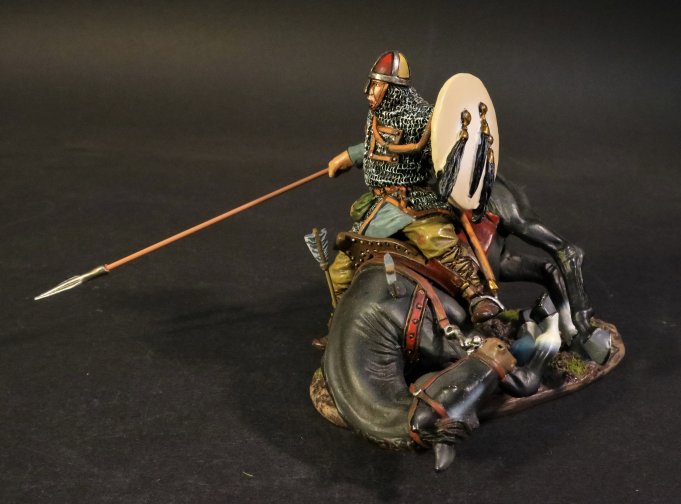
CID-04
THE CRUSADES,
EL CID AND THE RECONQUISTA,
THE SPANISH,
WOUNDED CAVALRY
ANDALUSIAN CASTLE
The impact and early significance of castles in Spain can be measured by the fact that the noun “castle” (from the Latin castella meaning “castles”) forms the origin of the name of Spain’s historically most powerful kingdom: Castile. And the history of Castile –the land of castles– projects itself widely over the history of Spain,
Castles were not built only in response to hostility between Christians and Moors but also by Christian and Moorish rulers to control internal conflicts. They were also constructed by ambitious and rebellious nobles on both sides, especially in those areas far removed from immediate royal authority.
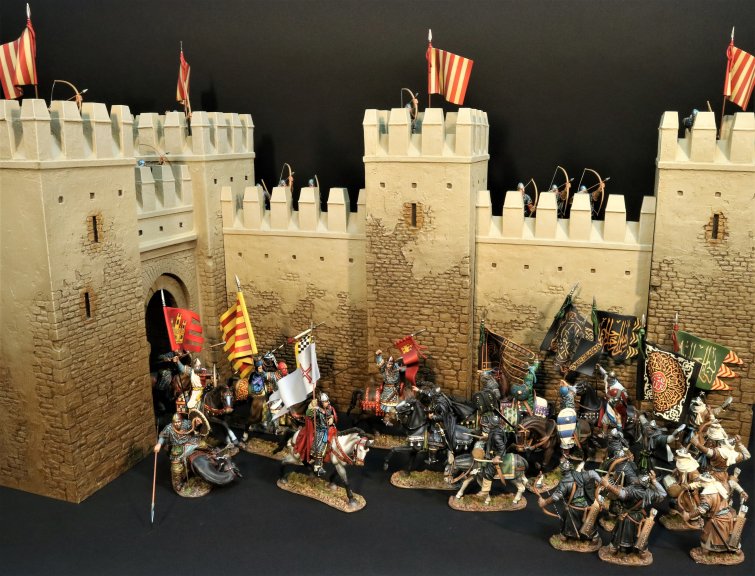
Villages and towns frequently established themselves around castles, creating hubs that provided work for the inhabitants. In times of hostility, those inhabitants could seek protection inside the castles. In return for protection, villagers often surrendered their freedom and became vassals of the lord of the castle, creating one of the most identifiable social structures associated with this period: feudalism (in general terms, a contract whereby a king or lord allowed a vassal to use his land in return for homage and service whenever called upon).
However, in Spain, and more specifically in the medieval kingdoms of Castile, León, Navarre and Aragón, the feudal system never took firm root because of the need to encourage citizens to populate or repopulate lands on the borders with Muslim al-Andalus.
Castles were built and existing towns strengthened as centres of resistance to the threat of Muslim expansionism. In return, monarchs or nobles offered willing citizens certain inducements/privileges (e.g. ownership of land, freedom from taxation, keeping the profits of war) for settling and defending frontier zones.
These privileges –legally recorded and known as fueros or charters— differed from area to area, but in general they outlined both the obligations and freedoms of the settlers and protected them from servitude.
From an early date, the main defensive wall of Spanish, especially Muslim castles had square or rectangular towers. Christian fortresses were more likely to have semi circular towers, whose advantage was that they were better to deflect stones and arrows.
The square tower still prevailed in Moorish castles into the 13[SUP]th[/SUP] and even 14[SUP]th[/SUP] centuries.
The “horseshoe arch” was another characteristic of Muslim castles, with the double horseshoe “Gate of Justice” the main entrance of the Alhambra fortress being a magnificent example.
The separate castle sections will allow for a variety of diorama set ups, varying from a full four sided castle! To a simple shelf backdrop.
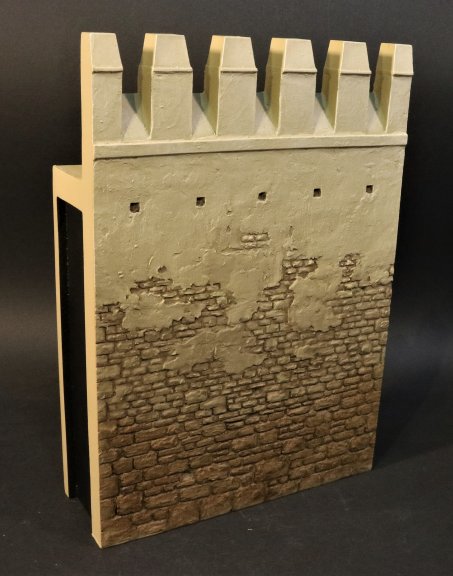
AND-101
THE CRUSADES,
EL CID AND THE RECONQUISTA,
ANDALUSIAN CASTLE,
STRAIGHT WALL.
(1 pc)
STRAIGHT WALL SECTION , 2 1/4” depth x 6 1/2” length x 9” height
SHIPPING CARTON SIZE 11 3/4” x 5” x 9”
SHIPPING CARTON WEIGHT 1.65kg
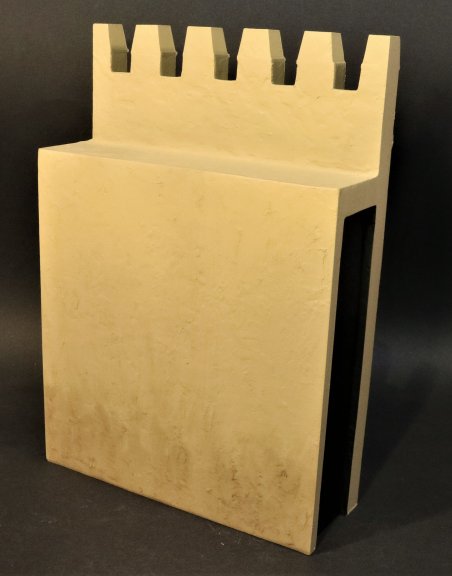
THE AGE OF ARTHUR
THE NORMAN ARMY

William Duke of Normandy (c. 1028-1087), usually known as William the Conqueror was the first Norman King of England, reigning from 1066 until his death in 1087.
In the 1050’s and early 1060’s, William became a contender for the throne of England held by the Childless Edward the Confessor, his first cousin removed.
There were other claimants. Including the powerful English earl Harold Godwinson, whom Edward had named as King on his deathbed, in January 1066.
William argued that Edward had previously promised the throne to him, and that Harold had sworn to support his claim.
Throughout the summer of 1066, William assembled an army and an invasion fleet in Normandy. This force included, in addition to troops from William’s own territories of Normandy and Maine, large numbers of mercenaries, allies and volunteers from Brittany, Northeast France and Flanders.
The Battle of Hastings took place on the 14[SUP]th[/SUP] October 1066. Although the numbers on each side were about equal, William had the advantage of having both cavalry, infantry and many archers.
Harold had only foot soldiers, and few archers. The English formed a shield wall along a ridge, and were initially so effective that the invading Norman army was repeatedly thrown back with heavy casualties.
Towards the end of the day some of William’s Breton troops panicked and fled, with some of the English troops pursuing the fleeing Bretons. These English troops who had broken ranks, were themselves attacked and destroyed by the Norman mounted knights.
Norman knights were armoured warriors that fought on horseback, with lance , sword and shield. These were the Norman “secret weapon” as nothing like them had been seen before in England. There were between 1,000-2,000 Norman knights in William’s army, and it was these troops which proved decisive to the invading army’s victory.
Two further Norman retreats were feigned, which once again drew the English into pursuit and expose them to repeated attacks by the Norman cavalry.
It appears that the decisive event was Harold’s death, of which there are differing versions which are told.
William of Jumieges claimed that Harold was killed by the Duke himself.
The Bayeux tapestry shows Harold’s death by an arrow to the eye.

We know that the English forces were deployed in a dense shieldwall formation at the top of a slope, (which newer sources suggests was Caldbec Hill), with their flanks protected by woods, and with marshy ground in front of them.
What is known about the Norman deployment, is that Duke William appears to have arranged his forces in 3 groups or “battles”. The left “battle” consisted mainly of Bretons, and was led by Alan The Red.
The Centre was held by the Normans, under direct command of the Duke, and the right was commanded by William Fitzosbern and Eustace II of Boulogne, and consisted of Frenchmen. and mercenaries from Picardy, Boulogne and Flanders.
The front lines of the invading force were made up of archers, with a secondary line of foot soldiers armed with spears and swords. The cavalry was held in reserve.
The Norman disposition of forces implies that the plan was to open the battle with archers, weakening the enemy with arrows, followed by infantry who would engage the shieldwall in close combat. The infantry would create openings in the English lines that would then be exploited by cavalry charges.
It is believed that the early barrage of arrows, probably had very little effect on the English shieldwall, due to the higher position of the English on the ridge.

NM-15
THE AGE OF ARTHUR,
THE NORMAN ARMY,
NORMAN CASUALTY
EL CID AND THE RECONQUISTA
THE SPANISH
The age in which El Cid lived has since been termed the “Reconquista”, or Christian reconquest of Spain from the Moors, and was one of the most colourful periods in military history.
The armies are spectacular and varied, ranging from the noble Christian Knights to the Muslim Andalusians, through to the religious zeal of the African invaders, the Almoravids and Almohads.
Although the period is often portrayed as a simple war of religion, it was in fact a great deal more complex, with Muslim commonly fighting Muslim, and Christian fighting Christians, with both sides using allies and mercenaries whenever it suited them.
This period, during the lifetime of El Cid 1040-1100AD saw the rise of heavy cavalry charges and other northern European influences, especially in the kingdoms of Aragon and Catalonia, which had the strongest links to France.

CID-04
THE CRUSADES,
EL CID AND THE RECONQUISTA,
THE SPANISH,
WOUNDED CAVALRY
ANDALUSIAN CASTLE
The impact and early significance of castles in Spain can be measured by the fact that the noun “castle” (from the Latin castella meaning “castles”) forms the origin of the name of Spain’s historically most powerful kingdom: Castile. And the history of Castile –the land of castles– projects itself widely over the history of Spain,
Castles were not built only in response to hostility between Christians and Moors but also by Christian and Moorish rulers to control internal conflicts. They were also constructed by ambitious and rebellious nobles on both sides, especially in those areas far removed from immediate royal authority.

Villages and towns frequently established themselves around castles, creating hubs that provided work for the inhabitants. In times of hostility, those inhabitants could seek protection inside the castles. In return for protection, villagers often surrendered their freedom and became vassals of the lord of the castle, creating one of the most identifiable social structures associated with this period: feudalism (in general terms, a contract whereby a king or lord allowed a vassal to use his land in return for homage and service whenever called upon).
However, in Spain, and more specifically in the medieval kingdoms of Castile, León, Navarre and Aragón, the feudal system never took firm root because of the need to encourage citizens to populate or repopulate lands on the borders with Muslim al-Andalus.
Castles were built and existing towns strengthened as centres of resistance to the threat of Muslim expansionism. In return, monarchs or nobles offered willing citizens certain inducements/privileges (e.g. ownership of land, freedom from taxation, keeping the profits of war) for settling and defending frontier zones.
These privileges –legally recorded and known as fueros or charters— differed from area to area, but in general they outlined both the obligations and freedoms of the settlers and protected them from servitude.
From an early date, the main defensive wall of Spanish, especially Muslim castles had square or rectangular towers. Christian fortresses were more likely to have semi circular towers, whose advantage was that they were better to deflect stones and arrows.
The square tower still prevailed in Moorish castles into the 13[SUP]th[/SUP] and even 14[SUP]th[/SUP] centuries.
The “horseshoe arch” was another characteristic of Muslim castles, with the double horseshoe “Gate of Justice” the main entrance of the Alhambra fortress being a magnificent example.
The separate castle sections will allow for a variety of diorama set ups, varying from a full four sided castle! To a simple shelf backdrop.

AND-101
THE CRUSADES,
EL CID AND THE RECONQUISTA,
ANDALUSIAN CASTLE,
STRAIGHT WALL.
(1 pc)
STRAIGHT WALL SECTION , 2 1/4” depth x 6 1/2” length x 9” height
SHIPPING CARTON SIZE 11 3/4” x 5” x 9”
SHIPPING CARTON WEIGHT 1.65kg



